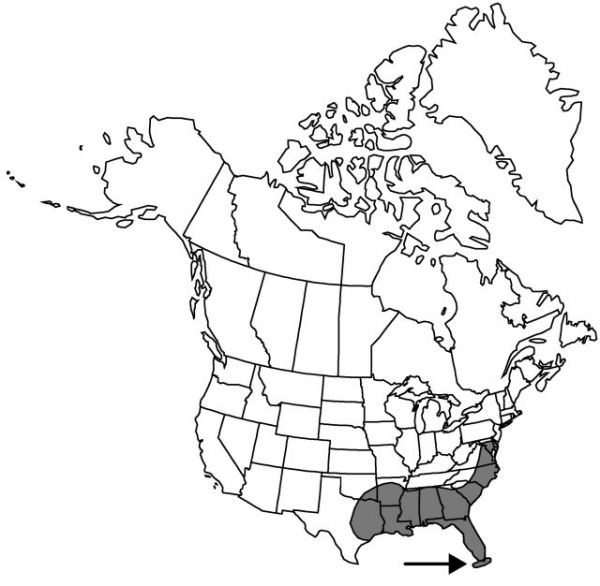Difference between revisions of "Smilax smallii"
Bull. Torrey Bot. Club 21: 430. 1894.
FNA>Volume Importer |
FNA>Volume Importer |
||
| Line 30: | Line 30: | ||
|elevation=0–600 m | |elevation=0–600 m | ||
|distribution=Ala.;Ark.;Del.;D.C.;Fla.;Ga.;La.;Md.;Miss.;N.C.;Okla.;S.C.;Tex.;Va. | |distribution=Ala.;Ark.;Del.;D.C.;Fla.;Ga.;La.;Md.;Miss.;N.C.;Okla.;S.C.;Tex.;Va. | ||
| − | |discussion=<p>Smilax smallii is the highest-climbing species of Smilax within the flora and it is particularly conspicuous during the winter. It has been used as an ornamental and as a winter decoration, primarily in the Christmas trade. The starchy rhizomes and succulent, immature stems were used for food by Native Americans and early settlers.</p> | + | |discussion=<p><i>Smilax smallii</i> is the highest-climbing species of <i>Smilax</i> within the flora and it is particularly conspicuous during the winter. It has been used as an ornamental and as a winter decoration, primarily in the Christmas trade. The starchy rhizomes and succulent, immature stems were used for food by Native Americans and early settlers.</p> |
|tables= | |tables= | ||
|references= | |references= | ||
| Line 54: | Line 54: | ||
|publication year=1894 | |publication year=1894 | ||
|special status= | |special status= | ||
| − | |source xml=https://jpend@bitbucket.org/aafc-mbb/fna-data-curation.git/src/ | + | |source xml=https://jpend@bitbucket.org/aafc-mbb/fna-data-curation.git/src/8f726806613d60c220dc4493de13607dd3150896/coarse_grained_fna_xml/V26/V26_997.xml |
|genus=Smilax | |genus=Smilax | ||
|species=Smilax smallii | |species=Smilax smallii | ||
Revision as of 16:48, 18 September 2019
Vines; rhizomes irregularly tuberous, branched, thick, to 1.5+ m. Stems perennial, climbing, greenish or reddish brown, terete, 10+ m × 27 mm, woody, glabrous, glaucous when young; prickles few, scattered, recurved, flattened, 3–4 mm. Leaves evergreen, distally disposed (± evenly disposed on immature plants); petiole 0.3–1.3 cm; blade deep green, often variegated, drying to pale green, lanceolate-elliptic to narrowly ovate, prominently reticulate, 5-veined from base, 5–6.6 × 1.7–3 cm, abaxially glabrous, not glaucous, base rounded to cuneate, margins entire to undulate, apex acuminate. Umbels many, axillary to leaves, 7–15-flowered, loose to dense, hemispherical to spherical; peduncle 0.5–2.3 cm. Flowers: perianth green; tepals 3–6 mm; anthers ± 1/5 as long as filaments; ovule 1 per locule; pedicel (0.3–)0.5–0.7(–1) cm. Berries black, globose to compressed, 5.5–8 mm, glaucous.
Phenology: Flowering Jun–Jul.
Habitat: Rich woods, pinewoods, streambanks, edges of fields, swamp margins, ditches, well-drained but not dry soils
Elevation: 0–600 m
Distribution

Ala., Ark., Del., D.C., Fla., Ga., La., Md., Miss., N.C., Okla., S.C., Tex., Va.
Discussion
Smilax smallii is the highest-climbing species of Smilax within the flora and it is particularly conspicuous during the winter. It has been used as an ornamental and as a winter decoration, primarily in the Christmas trade. The starchy rhizomes and succulent, immature stems were used for food by Native Americans and early settlers.
Selected References
None.